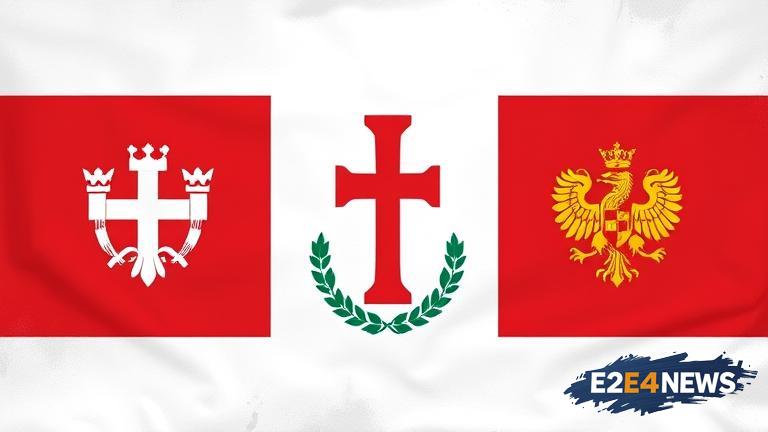In a recent development, the Georgian government has introduced a new regulation that makes it mandatory for all schools and kindergartens in the country to display national symbols. This move is intended to foster a sense of patriotism and national identity among students from a young age. The national symbols that will be displayed include the Georgian flag, the national anthem, and the country’s coat of arms. The government believes that this initiative will help students develop a deeper understanding and appreciation of their country’s history, culture, and values. The regulation applies to all educational institutions, including public and private schools, as well as kindergartens. The display of national symbols will be a daily routine, with students expected to sing the national anthem and pay respect to the flag during morning assemblies. The government has also instructed schools to incorporate lessons on national history, culture, and values into their curriculum. This move is seen as an effort to promote national unity and pride among the younger generation. The regulation has been welcomed by many educators and parents, who believe that it will help students develop a stronger sense of national identity. However, some critics have expressed concerns that the move may be seen as an attempt to impose nationalism and suppress diversity. The government has assured that the regulation is not intended to promote any particular ideology, but rather to promote a sense of shared values and identity among citizens. The display of national symbols is expected to become an integral part of school life, with students encouraged to participate in patriotic events and activities. The government has also announced plans to provide funding for schools to purchase national symbols and educational materials. The regulation is part of a broader effort by the government to promote national identity and unity, following a series of conflicts with neighboring countries. The move has been seen as an attempt to strengthen national cohesion and promote a sense of shared purpose among citizens. The government has emphasized that the regulation is not intended to restrict individual freedoms or impose any particular ideology, but rather to promote a sense of national pride and identity. The display of national symbols is expected to become a daily routine in schools, with students encouraged to participate in patriotic events and activities. The government has also announced plans to launch a series of educational programs aimed at promoting national identity and values. The programs will include lessons on national history, culture, and values, as well as workshops and seminars on patriotism and national unity. The government believes that these programs will help students develop a deeper understanding and appreciation of their country’s heritage and values. The regulation has been welcomed by many educators and parents, who believe that it will help students develop a stronger sense of national identity and pride. However, some critics have expressed concerns that the move may be seen as an attempt to impose nationalism and suppress diversity. The government has assured that the regulation is not intended to promote any particular ideology, but rather to promote a sense of shared values and identity among citizens. The display of national symbols is expected to become an integral part of school life, with students encouraged to participate in patriotic events and activities. The government has also announced plans to provide funding for schools to purchase national symbols and educational materials. The regulation is part of a broader effort by the government to promote national identity and unity, following a series of conflicts with neighboring countries. The move has been seen as an attempt to strengthen national cohesion and promote a sense of shared purpose among citizens.





